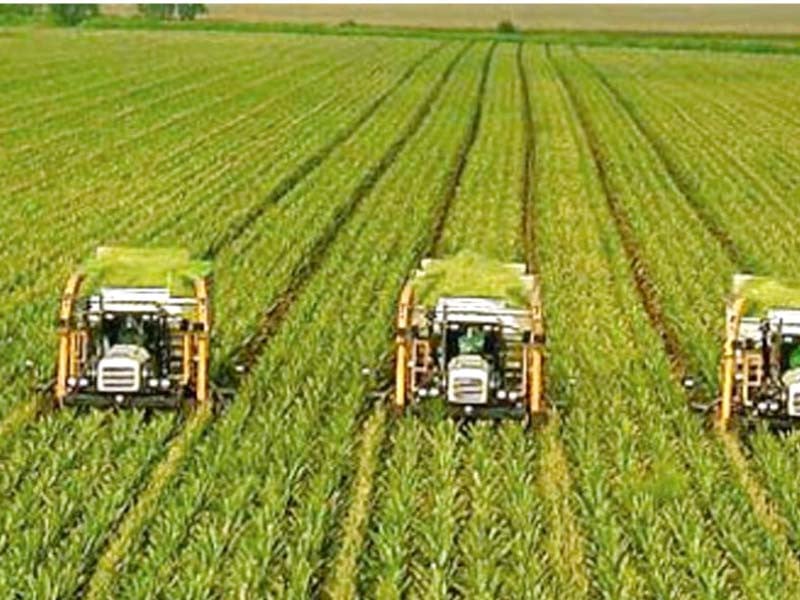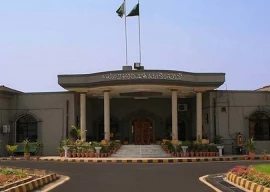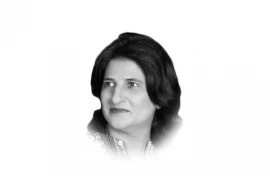
Pakistan’s economic growth rate remained anemic at 2.4% and the investment fell to the lowest level in 50 years in the fiscal year ending June 2024, but the three governments that were in power in the last one year managed to keep the ship afloat by steering the country back from the brink of an imminent sovereign default.
The outgoing fiscal year turned out to be another lost year, as almost all major economic targets — inflation, budget deficit, investment and savings -- were missed again. On the positive side, the government managed to curtail current account deficit and brought stability in the exchange rate market through administrative measures and “structural” steps, taken by the central bank and the military.
Had there been no International Monetary Fund programme at the beginning of this fiscal year, we would have been facing an altogether different situation, said Finance Minister Muhammad Aurangzeb while unveiling the Economic Survey of Pakistan 2023-24.
The finance minister said that the real GDP grew by 2.4% due to healthy growth in the agriculture sector. However, the government had set the GDP growth target at 3.5%. The International Monetary Fund had projected Pakistan’s economic growth at 2%.
There was exceptional growth in the agriculture sector that pulled the overall economic growth to 2.4%. The agriculture sector growth compensated for the damages caused by the central bank’s tight monetary policy and overall political uncertainty that kept foreign investors at bay.
The Large-Scale Manufacturing (LSM) sector faced difficulties due to a high interest rate environment but the only saviour was the agriculture sector this year, said Aurangzeb.
The government’s biggest achievement was avoiding a sovereign default by securing the $3 billion IMF deal. However, it led to massive increase in unemployment, poverty and inflation. According to the World Bank, the poverty further increased
to 40.1% in this fiscal year with seven million more people slipping below the poverty line.
The 2.4% growth rate was slightly lower than the country’s population growth. This marks the second consecutive year of low growth coupled with higher inflation, further diminishing people’s purchasing power.
The government will make sure that none of its decisions pushes Pakistan towards a default-like situation again and in the next fiscal year the measures will be taken to anchor the current phase of economic stabilisation, said Ali Pervaiz Malik, the Minister of State for Finance.
The minister said that the current account deficit is expected to remain around $200 million this year as against over $6 billion estimates at the start of the fiscal year. The stability in the currency market has been achieved during the past few months and the central bank’s steps to regulate the foreign exchange companies played a pivotal role in it.
However, the Investment-to-Gross Domestic Product ratio slipped to 13.1% of GDP in this fiscal year - far lower than the target – and also the lowest in 50 years.
To a question about half-a-century-low level of investment, Minister of State for Finance Ali Pervaiz Malik said that domestic savings were not enough to finance investment. But, he said, efforts would be made in the next fiscal year to change the direction.
The minister said that Pakistan’s economy, which was struggling to stabilise in the previous fiscal year due to various shocks, has now stabilised on the back of policy, structural and administrative measures.
The average inflation rate during this fiscal year remained far above the 21% target and the central bank warned on Monday that inflation would again start picking up from July due to budgetary measures.
Sectoral growth
The agricultural sector posted a growth of 6.3% due to an exceptionally good output of important crops and some recovery in cotton production, while the industrial and services sectors grew by 1.21%.
Significant curbs on imports and consumption coupled with a historically high interest rate of 22% hampered the economic growth to the extent that nearly every sector, with the exception of agriculture, suffered.
Pakistan achieved a record wheat production of 31.4 million metric tonnes in the outgoing fiscal year, marking an 11.6% increase over the last year’s output. The bulk production, coupled with 3.5 million tonnes of imports, led to a crash in the wheat prices. Sugarcane production stood at 87.6 million metric tonnes, a slight decrease of 0.4%. Rice production increased by 35% to 9.9 million tonnes, contributing to higher exports and foreign currency earnings.
Cotton output rose to 10.2 million bales, a 108% increase from the previous year, following recovery from the 2022 floods.
The industrial sector grew by just 1.21%, significantly missing the annual target set by the government. The government’s restrictions on imports stifled industrial growth, while dwindling foreign inflows led to import rationing in an effort to preserve foreign exchange reserves.
The growth in large-scale industries, major contributors to taxes and employment generation, remained stagnant this fiscal year after a contraction of nearly 10% in the previous fiscal year.
The electricity, gas and water supply sector contracted by nearly 11% due to a significant decline in electricity output. Expensive electricity prompted consumers to move away from the national grid, further reducing national output.
The services sector also grew by 1.21% this fiscal year, a reversal from the contraction experienced in the previous fiscal year. Within the services sector, wholesale and retail trade marginally grew by 0.3%, while the transport sector grew by just 1.2%, food services by 4.1%, and real estate activities by 3.8%.
However, the information and communication sector contracted by 3%, and there was also a contraction of 9.6% in financial and insurance activities.
IMF talks
The finance minister said that the talks with the IMF were productive and constructive but said that Pakistan will have to increase the tax-to-GDP ratio. He maintained that there would no longer be sacred cows and everyone would have to pay his/her due share of taxes.
The exporters are resisting the government’s proposal to end their preferential 1% fixed income tax regime.
The finance minister said that only hospitals can be run through charity, but for running the state, taxes will have to be paid.
SOEs Privatisation
The finance minister once again announced that he would not declare any state-owned enterprise as “strategic”. There is no such thing as strategic SOEs but there can be strategic functions that can either be performed in the public or the private sector, said the finance minister.
The finance minister further said that the power distribution companies will be handed over to the private sector, either through outright sale or under “concession agreements”. The finance minister said that after the promulgation of the ordinance, the government would replace the existing boards of the power distribution companies.
To a question whether the government will negotiate the Chinese debt, the minister of state said that idle capacity payments were the sovereign commitments which the government would honour.
Aurangzeb said the PM’s recent visit to China was not aimed at seeking rollovers of the Chinese loans but to rejuvenate the China-Pakistan Economic Corridor after a phase of hiatus and attacks on the Chinese nationals.
Fiscal Discipline
The finance minister said that the government achieved fiscal discipline during the outgoing fiscal year. However, it also reversed some of the measures taken by the Special Investment Facilitation Council to ensure fiscal discipline.
The National Economic Council on Monday approved Rs75 billion for the parliamentarians’ schemes and also added provincial nature projects in the federal PSDP in relaxation of the SIFC and the NEC decisions of January this year.
“Yes, we have reversed some of the NEC decisions, which the federal government has the right to do,” said the finance minister when he was asked to comment whether the SIFC was taken on board before reversing those decisions.


1727242355-0/Diddy-(1)1727242355-0-165x106.webp)

1726749701-0/BeFunky-collage-(15)1726749701-0-165x106.webp)

1608800431-0/image-(1)1608800431-0-270x192.png)

1727348136-0/Copy-of-Untitled-(40)1727348136-0-270x192.webp)









COMMENTS
Comments are moderated and generally will be posted if they are on-topic and not abusive.
For more information, please see our Comments FAQ